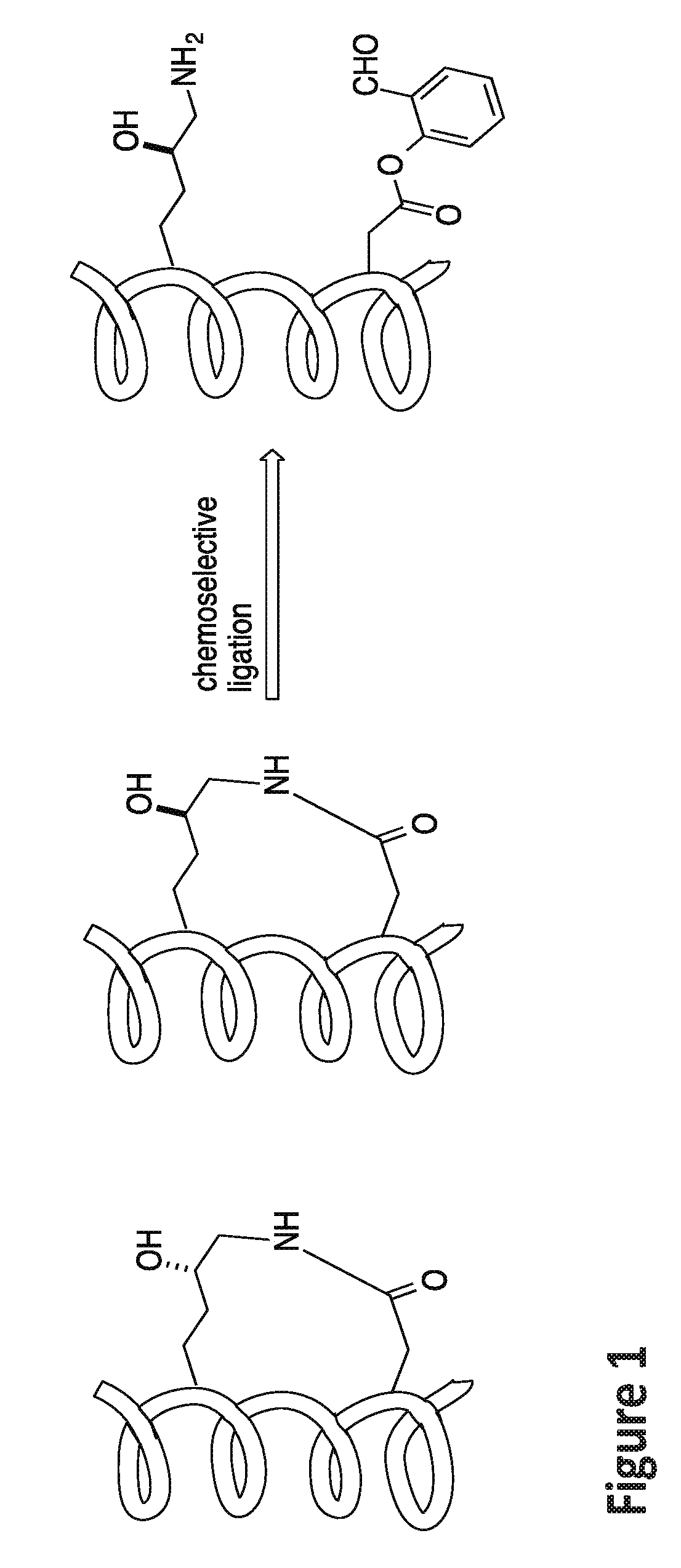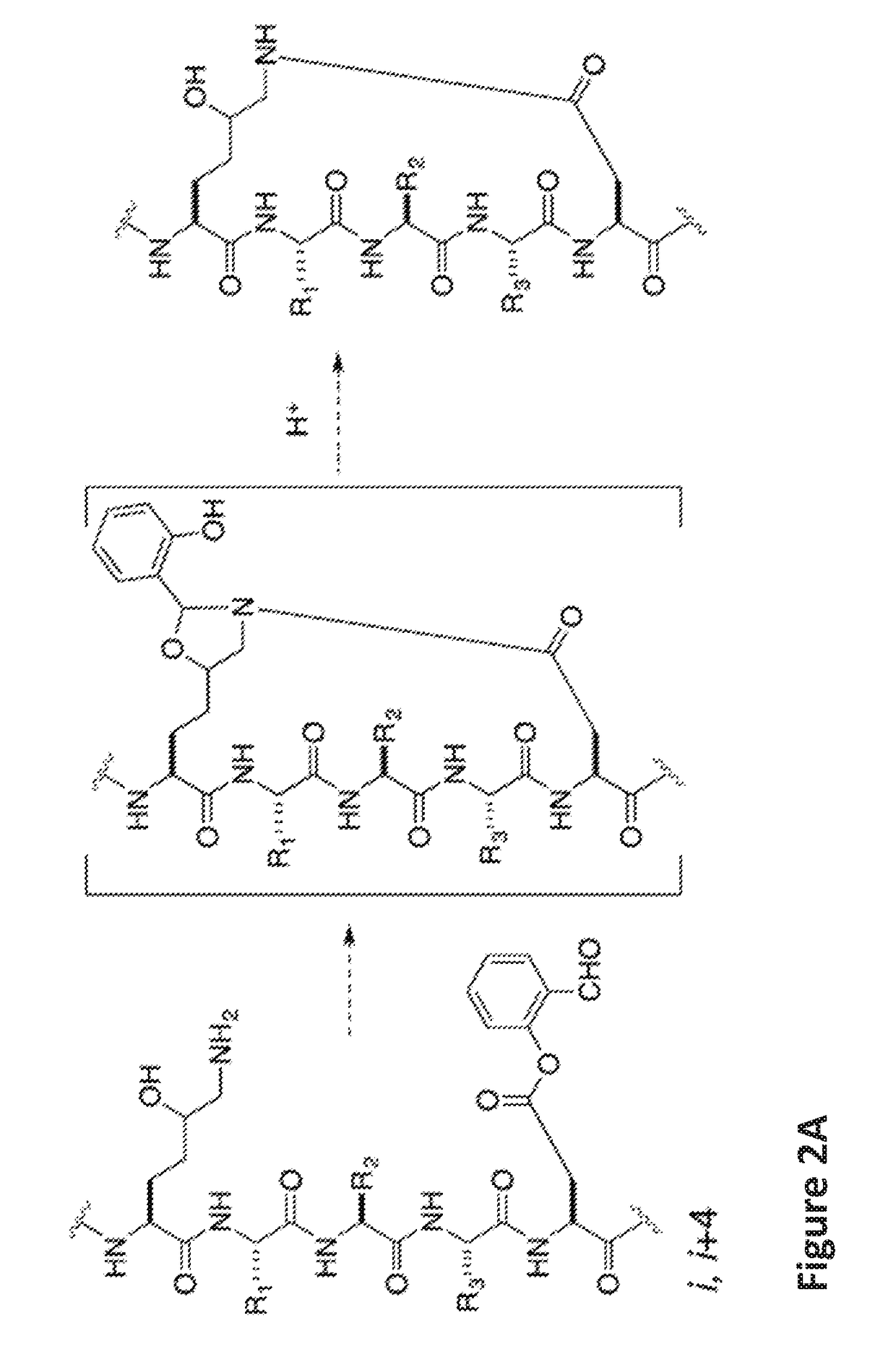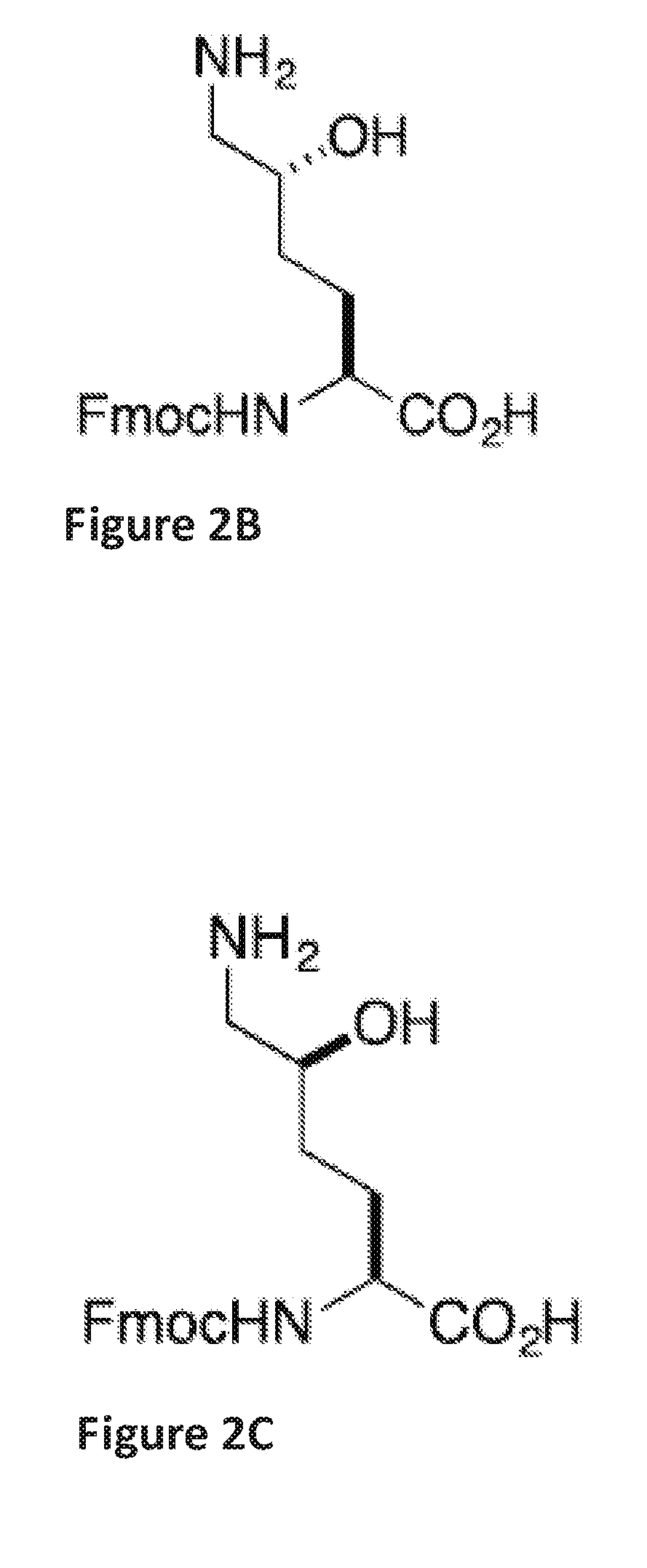Stapled helical peptides and methods of synthesis
- Summary
- Abstract
- Description
- Claims
- Application Information
AI Technical Summary
Benefits of technology
Problems solved by technology
Method used
Image
Examples
example 1
of Ala-Arg-Arg-Asp(Salicylaldehyde Ester)-Glu-Tyr-Leu-Lys(5-OH)-Ala-Ile-Gln Stapled Peptide
[0148]Linear peptide Ala-Arg-Arg-Asp(salicylaldehyde ester)-Glu-Tyr-Leu-Lys(5-OH)-Ala-Ile-Gln (SEQ ID NO:5) was synthesized by following a standard 9H-fluoren-9-yl-methoxycarbonyl (Fmoc) solid phase peptide synthesis protocol on a Rink-amide resin. Briefly, three equiv. of HATU, three equiv. of amino acids, and six equiv. of DIEA in DMF were used in each coupling reaction. The coupling reaction was allowed to proceed for 40 minutes. Fmoc deprotection was accomplished by treating the resin-bound peptides with 20% piperidine / DMF (2×, 10 min each). The peptides were cleaved from the Rink amide resin by treating the resin with a cleavage cocktail containing 95% TFA and 2.5% water for 1 hour. The filtrates were concentrated. The crude peptides were dissolved in pyridine / acetic acid buffer (mole:mole, 1:2) at an estimated concentration (based on the resin loading) of 5 mM in a flask at room temperat...
example 2
n of Solubility
[0149]To examine the solubility performance of this stapled peptide compared to commonly used hydrocarbon linked stapled peptides, the solubility of compound 1 (Ala-Arg-Arg-S5-Glu-Tyr-Leu-S5-Ala-Ile-Gln (SEQ ID NO:10) and K(OH)D lactam-typed stapled peptide (2) was assessed. Hydrocarbon linked stapled peptides have very poor solubility in water, which results in no binding affinity to the MAGUK GK domain. The K(OH)D lactam-type stapled peptide exhibited very good solubility and the binding affinity with the GK domain was 5.9 μM from ITC studies.
example 3
of Asp(Salicylaldehyde Ester)Ala-Ala-Ala-Lys(Ser) Stapled Peptide
[0150]Linear peptide Asp(salicylaldehyde ester)Ala-Ala-Ala-Lys(Ser) (SEQ ID NO:6) was synthesized by following a standard 9H-fluoren-9-yl-methoxycarbonyl (Fmoc) solid phase peptide synthesis protocol on a Rink-amide resin. Briefly, three equiv. of HATU, three equiv. of amino acids, and six equiv. of DIEA in DMF were used in each coupling reaction. The coupling reaction was allowed to proceed for 40 minutes. Fmoc deprotection was accomplished by treating the resin-bound peptides with 20% piperidine / DMF (2×, 10 min each). The peptides were cleaved from the Rink amide resin by treating the resin with a cleavage cocktail containing 95% TFA and 2.5% water for 1 hour. The filtrates were concentrated. The crude peptides were dissolved in pyridine / acetic acid buffer (mole:mole, 1:2) at an estimated concentration (based on the resin loading) of 5 mM in a flask at room temperature for 1 hour. The solution was concentrated, and t...
PUM
| Property | Measurement | Unit |
|---|---|---|
| Structure | aaaaa | aaaaa |
| Water solubility | aaaaa | aaaaa |
| Hydrophilicity | aaaaa | aaaaa |
Abstract
Description
Claims
Application Information
 Login to View More
Login to View More - R&D
- Intellectual Property
- Life Sciences
- Materials
- Tech Scout
- Unparalleled Data Quality
- Higher Quality Content
- 60% Fewer Hallucinations
Browse by: Latest US Patents, China's latest patents, Technical Efficacy Thesaurus, Application Domain, Technology Topic, Popular Technical Reports.
© 2025 PatSnap. All rights reserved.Legal|Privacy policy|Modern Slavery Act Transparency Statement|Sitemap|About US| Contact US: help@patsnap.com



